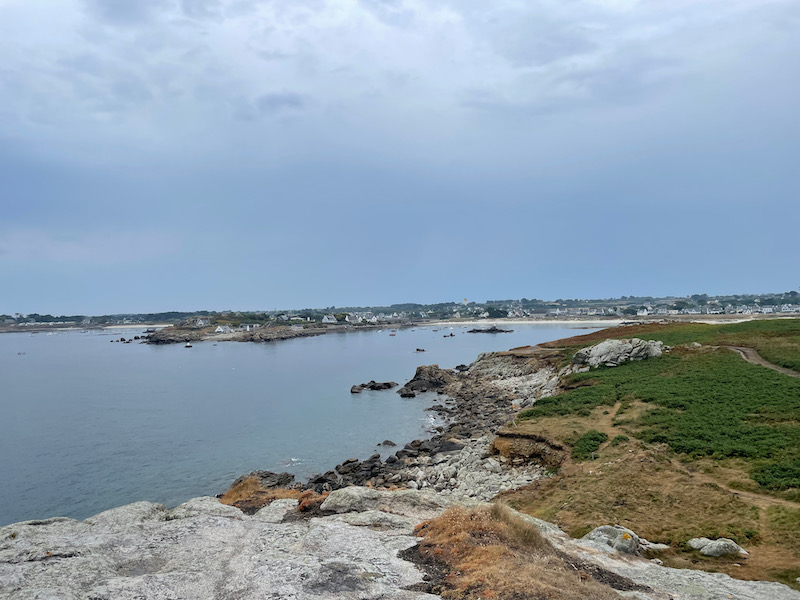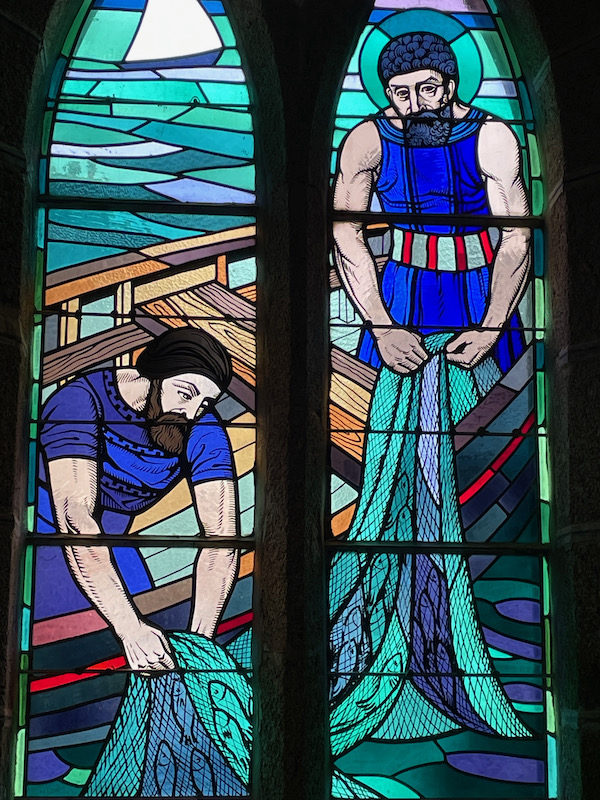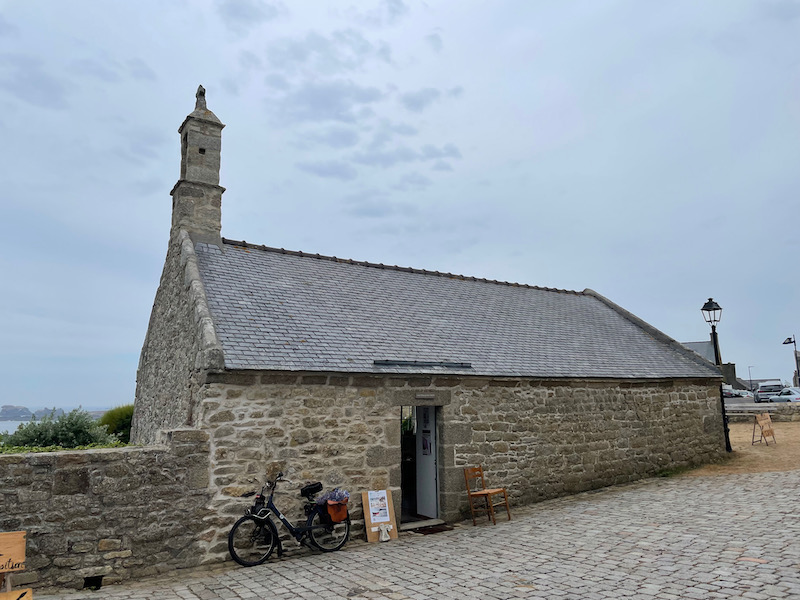Our Blog - Presqu'ile Saint-Laurent and Porspoder
We did our morning walk at the Presqu'île Saint-Laurent. A "presqu'ile" is a peninsula, literally a combination of the French words "presque" (almost) and "île" (island) ... so it is land that is "almost an island". The peninsula is home to remains dating from the Neolithic era. I just took a few pictures to give you an idea of the land.





And of course, no morning walk would be complete without the Lucy pictures ....



The Saint-Budoc church in the town of Porspoder dates from 1645 and is built of Aber granite from nearby Aber-Ildut. Originally, you would enter from the door under the bell tower but a new side entrance was added in 1857. You can also see the very small bell tower a bit further back.


Inside, the nave has six bays flanked by aisles delimited by semicircular arches. Near the choir, you can see a pointed "diaphragm" arch that supports the small bell tower. While I didn't get a close-up, you can see the inverted-boat wooden roof that has been painted, and the cross-beams that are painted with scrolls that seem to imitate waves, with dragon heads on each ends which seem to be swallowing the beams. We see these quite often in churches in Brittany. These "swallowed beams" are supposed to represent Evil (the serpent from the Bible) being crushed under the weight of the roof of the church and trying to swallow the beams of the building's framework.

The Altar of the Rosary is a Renaissance altar from the 17th century. Very colorful, this altar shows the Holy Family in the center. Around them, 15 medallions symbolize the mysteries of the Rosary: The Visitation, the Nativity, the Pentecost, Jesus in the midst of the doctors of the Law, then in the Garden of Olives, the ascent to Calvary, the Resurrection, the Ascension, the Crucifixion, the Flagellation, the Coronation of the Virgin, the Coronation of thorns, the Assumption, the Presentation at the Temple and finally the Annunciation. The interesting thing about these medallions is that they are not in order. So when someone is reciting the rosary, they have to look for the next medallion which helps them to focus.


The main altarpiece is a carved wood panel. In the center, Christ is seen holding a chalice in his right hand and a bread in his left. It illustrates the institution of Eucharist. This is a copy of a painting done for King Louis XIII in 1641 and currently at the Louvre. The statues on the left and right are Saint Peter holding the keys and and Saint Paul holding the sword that will decapitate him.

The oldest stained-glass windows are only from 1899 and show scenes from the life of Saint Budoc, to whom the church is dedicated. According to legend, his mother was thrown into the sea in a barrel when she was pregnant for slander of her mother-in-law. She was tossed by the waves for five months before landing on the shores of Ireland where her son was born. The name Budoc means "saved from the waters" in Breton. He became a monk and priest and returned to this area during the fall of the Roman empire to preach and became Bishop of Dol in 539. This event is illustrated by one of these older stained-glass windows, where we see the saint blessing Gallic warriors.

The majority of the stained-glass windows are very recent (1933) and you can definitely see the difference in their design. They illustrate miraculous events such as Saint Michael slaying the dragon or Saint Francis of Assisi preaching to birds in front of the wolf that he managed to convert. There is also one that pays homage to the fishermen who worked offshore.



Next door was the small Chapelle Sainte-Anne, which was being used for an art exhibit. There were LOTS of art exhibits during the month of August in Brittany!
